Some Fucking Resources For All Ur Writing Fuckin Needs
some fucking resources for all ur writing fuckin needs
* body language masterlist
* a translator that doesn’t eat ass like google translate does
* a reverse dictionary for when ur brain freezes
* 550 words to say instead of fuckin said
* 638 character traits for when ur brain freezes again
* some more body language help
(hope this helps some ppl)
More Posts from Kitunes-02 and Others
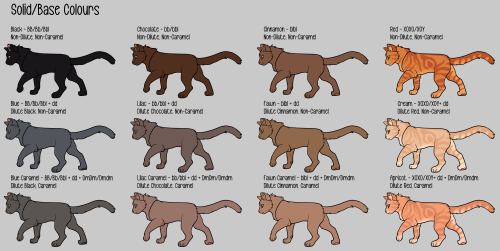
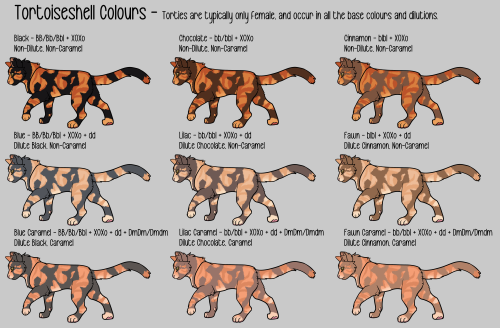

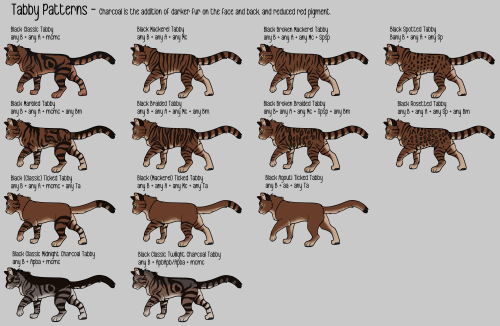
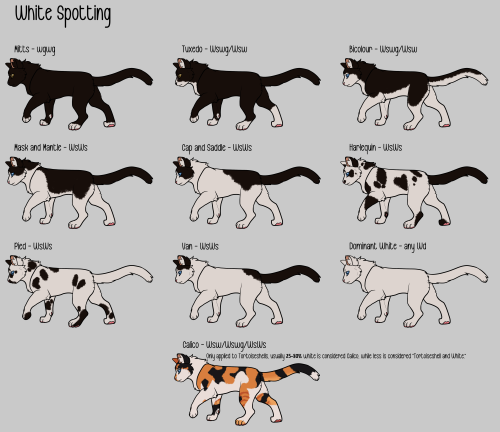
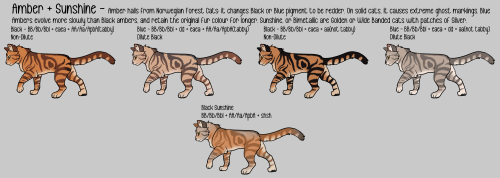
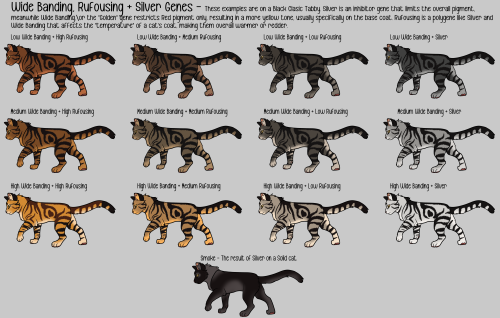
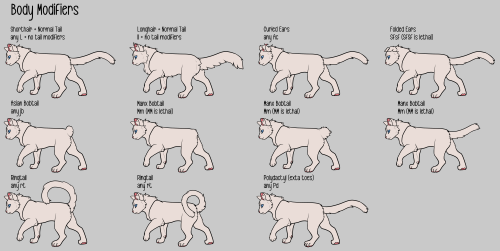
made these studying cat genetics over the past 2 weeks!
i felt like there weren't enough visual guides of cat genetics so i went ahead and made some simple ones, my main references were Sparrow's Garden the website, Sparrow's Garden the blog, Messybeast, and The Little Carnivore.
Please only use these for general reference and not for tracing, using as a base, or reposting!! You can trace the poses for practice, but please don't post them if you do so. Please don't use them as a free Base, either.
tips for getting people to like your ocs
*disclaimer: this is based on what’s worked for me, aka an artist that likes to make comics/storyboards. so this advice is directed at people who do that
you can do things like this:

Which is fun! Character sheets like this are great, especially for personal reference! But frankly, I don’t think most people engage with this (at least I personally don’t). You could have the coolest character in the world, but it will be harder for most people to feel invested when they’re presented so neutrally like this.
My main piece of advice is: get better at writing.
That might sound harsh when said like that, but let me explain what I mean! (Not trying to imply you’re bad at writing either!)
What I tend to do is just throw characters into situations with as little handholding as I can. Give enough context that readers can follow along, but don’t feel like they’re being explained to.
what can you learn about the characters through their designs alone? (age, personality, economic status, occupation, etc)
what can you learn about the characters’ relationship though their interactions alone? (are they close? familial? romantic? is there hostility? are they tense/relaxed?)
what are the characters currently doing? what were they doing previously (how long have they been talking)? what are they going to do next? can you convey this without dialogue?
how do they feel about what they are doing? are they content? focused? over/understimulated? would they rather be doing something else?
where are they? does it matter? would establishing a setting in at least one panel clarify the scene? is there anything in the enviroment that could tell some of the story?
what time of day is it? what time of year is it? what is the weather like?
Now, with all this in mind, I'm going to give you another example. I'm going to use completely brand new characters for the sake of the experiment, so you won't have any bias (aka I can’t use Protagonist from above, since you already know all about him).


Did this get more of an emotional response from you than the first example? Why do you think so? Who are these characters? How do they know each other? What else can you infer about them? What happened? Who is "she"?
Now, you don't have to actually answer all those questions. But think about them! You can tell people a whole lot about your characters without ever showing them a list of their likes and dislikes.
Obviously, comics aren't the only way to get people invested in your original characters! But regardless, easily digestible formats will grab people's attention faster than huge blocks of text, and comics are a lot less work than doing wholeass storyboards.
Now go and share your ocs with the world!!!
things i did that forced me to be a better artist:
used a reference for everything
thinner line art (you think thats thin? go thinner….)
sketch, then do a cleaner sketch, THEN start finalizing
THUMBNAILS
color research, picking a set palette or light/dark for each work
you like that pose? redo it one more time
USE A DAMN REFERENCE
do not rely on stylization as an excuse for anatomy
draw the goddamn background you coward
just draw the hand- a bad hand is better than a hidden hand
the rule of thirds WORKS
take a considerable break between sketch and lines/paint
know that art takes longer as you get better at it
draw the seams on clothes
stop aiming for accuracy and focus on fluidity and motion, accuracy will come with practice of those two concepts
just…do the chiaroscuro. just DO IT. no excuses it always works
stop making excuses, make yourself an art schedule/set weekly(or daily) art goals and just DO IT.

there’s a website where you put in two musicians/artists and it makes a playlist that slowly transitions from one musician’s style of music to the other’s
it’s really fun
People who like mantises but aren't that into entomology are always "orchid mantises" this and "orchid mantises" that. Overrated. Can we talk about Toxodera integrifolia for a minute:



(Image links because as much as it pains me I've never seen one of these beauties irl: 1 2 3)
Like how are these things real. Girl what is that thorax shape. Why are you wearing eyeliner. And the colors? Absolutely fire. This is a 10/10 insect if you ask me.

A small guide for people who struggle with this area
![[Image Source]](https://64.media.tumblr.com/9f3c8930ae15acbb6e0e3956bcbd02ef/f26bba50329d71b2-05/s500x750/88bf47543e6199d4478197d28332a025e8b87f16.jpg)
[Image Source]
Gene Behind Orange Fur in Cats Found at Last
Shared from Science.org.
It would be pretty easy to guess that Garfield was a tomcat even if you didn’t know his name—or didn’t want to peek under his tail. Most orange cats are boys, a quirk of feline genetics that also explains why almost all calicos and tortoiseshells are girls.
Scientists curious about those sex differences—or perhaps just cat lovers—have spent more than 60 years unsuccessfully seeking the gene that causes orange fur and the striking patchwork of colors in calicos and tortoiseshells. Now, two teams have independently found the long-awaited mutation and discovered a protein that influences hair color in a way never seen before in any animal.
“I am fully convinced this is the gene and am happy,” says Carolyn Brown, a University of British Columbia geneticist who was not involved in either study. “It’s a question I’ve always wanted the answer to.”
Scientists have long been fascinated by tortoiseshell and calico cats: the offspring of a black cat and an orange cat. Multicolored cats from such a cross are almost always female, suggesting the gene variant that makes fur orange or black is located on the X chromosome. The male offspring of such a cross are typically unicolor because they inherit just one parent’s X chromosome: We can guess, for instance, that Garfield’s mother is orange because he inherited his only X chromosome from her.**
But female cats inherit an X chromosome from each parent. Cells don’t generally need both, so during embryonic development each cell randomly chooses one X to express genes from. The other chromosome rolls up into a mostly inert ball—a phenomenon called X inactivation. As a result, tortoiseshell cats end up with separate patches of black and orange fur depending on which chromosome was inactivated in that part of their skin. Calico cats add white fur into the mix because they have a second, unrelated genetic mechanism that shuts down pigment production in some cells.
In most mammals, including humans, red hair is caused by mutations in one cell surface protein, Mc1r, that determines whether skin cells called melanocytes produce a dark pigment or a lighter red-yellow pigment in skin or hair. Mutations that make Mc1r less active cause melanocytes to get “stuck” producing the light pigment.
But the gene encoding Mc1r didn’t seem explain where cats’ orange fur came from. It isn’t located on the X chromosome in cats or any other species—and most orange cats don’t have Mc1r mutations. “It’s been a genetic mystery, a conundrum,” says Greg Barsh, a geneticist at Stanford University.
To solve it, Barsh’s team collected skin samples from four orange and four nonorange fetuses from cats at spay-neuter clinics. As a proxy to determine how individual skin cells express genes, the researchers measured the amount of RNA that each melanocyte was producing and determined the gene it encoded. Melanocytes from orange cats, they found, made 13 times as much RNA from a gene called Arhgap36. The gene is located on the X chromosome, which led the team to think they had the key to orange color.
But when the researchers looked at Arhgap36’s genetic sequence in orange cats, they didn’t find any mutations in the DNA that encodes the Arhgap36 protein. Instead, they found the orange cats were missing a nearby stretch of DNA that didn’t affect the protein’s amino acid components but might be involved in regulating how much of it the cell produced. Scanning a database of 188 cat genomes, Barsh’s team found every single orange, calico, and tortoiseshell cat had the exact same mutation. The group reports the discovery this month on the preprint server bioRxiv.
A separate study, also posted to bioRxiv this month, confirms these findings. Similar experiments run by developmental biologist Hiroyuki Sasaki at Kyushu University and his colleagues revealed the same genetic deletion in 24 feral and pet cats from Japan, as well as among 258 cat genomes collected from around the world. They also found that skin from calico cats had more Arghap36 RNA in orange regions than in brown or black regions. Moreover Arhgap36 genes in mice, cats, and humans acquire chemical modifications that silence them on one of the two X chromosomes in females, Sasaki’s team documented, suggesting the gene is subject to X inactivation.
When Barsh and Sasaki learned their respective teams had discovered the same mutation, they decided to post their preprints at the same time. (Because they are preprints, neither study has been peer reviewed.) Both groups further found that increasing the amount of Arhgap36 in melanocytes activates a molecular pathway that switches the cells to producing light red pigment regardless of whether MC1r is active.
No one previously knew Arhgap36 could affect skin or hair coloration—it is involved in many aspects of embryonic development, and major mutations that affect its function throughout the body would probably kill the animal, Barsh says. But because the deletion mutation appears to only affect Arhgap36 function in melanocytes, cats with the mutation are not only healthy, but also cute.
Arhgap36’s inactivation pattern in calicos and tortoiseshells is typical of a gene on the X chromosome, Brown says, but it’s unusual that a deletion mutation would make a gene more active, not less. “There is probably something special about cats.”
Experts are thrilled by the two studies. “It’s a long-awaited gene,” says Leslie Lyons, a feline geneticist at the University of Missouri. The discovery of a new molecular pathway for hair color was unexpected, she says, but she’s not surprised how complex the interactions seem to be. “No gene ever stands by itself.”
Lyons would like to know where and when the mutation first appeared: There is some evidence, she says, that certain mummified Egyptian cats were orange. Research into cat color has revealed all kinds of phenomena, she says, including how the environment influences gene expression. “Everything you need to know about genetics you can learn from your cat.”
A Deletion at the X-linked Arhgap36 Gene Locus is Associated With the Orange Coloration of Tortoiseshell and Calico Cats
Molecular and Genetic Characterization of Sex-linked Orange Coat Color in the Domestic Cat
**Minor correction: Garfield’s mother could also have been a tortoiseshell.
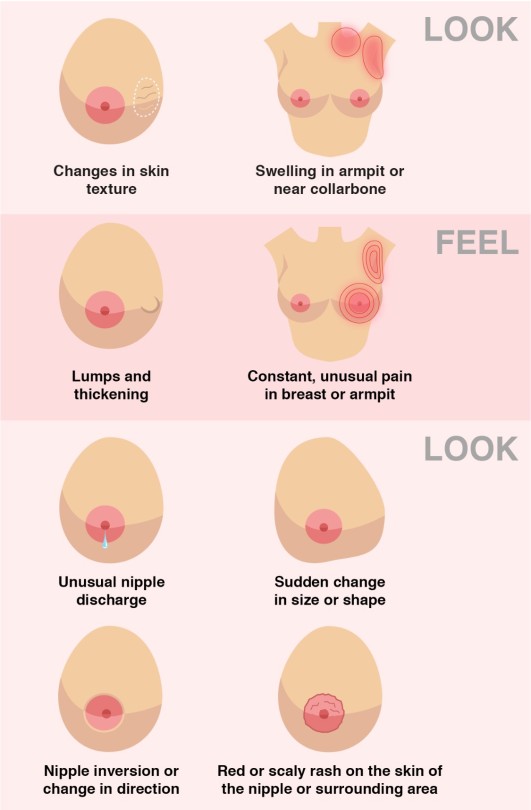
How to spot signs and symptoms of Breast Cancer
As many Ratau voicelines I could record before I had to update my PS5, he definitely does have more. I think similarly to the Bishops, 8-16 at the very least
Download this easy DIY clothing repair guide (only 10 pages) from Uni of Kentucky

link to PDF
https://fcs-hes.ca.uky.edu/sites/fcs-hes.ca.uky.edu/files/ct-mmb-147.pdf
-
 roughridah0 reblogged this · 4 weeks ago
roughridah0 reblogged this · 4 weeks ago -
 sunalma reblogged this · 4 weeks ago
sunalma reblogged this · 4 weeks ago -
 funni-bunny-thing reblogged this · 4 weeks ago
funni-bunny-thing reblogged this · 4 weeks ago -
 funni-bunny-thing liked this · 4 weeks ago
funni-bunny-thing liked this · 4 weeks ago -
 sunalma reblogged this · 4 weeks ago
sunalma reblogged this · 4 weeks ago -
 slowlysteadycoffee liked this · 4 weeks ago
slowlysteadycoffee liked this · 4 weeks ago -
 melatoninicace liked this · 4 weeks ago
melatoninicace liked this · 4 weeks ago -
 sunalma reblogged this · 4 weeks ago
sunalma reblogged this · 4 weeks ago -
 instantlysilentgenesis liked this · 4 weeks ago
instantlysilentgenesis liked this · 4 weeks ago -
 insctica liked this · 4 weeks ago
insctica liked this · 4 weeks ago -
 tedfromtedtalks liked this · 4 weeks ago
tedfromtedtalks liked this · 4 weeks ago -
 cintra-lime liked this · 4 weeks ago
cintra-lime liked this · 4 weeks ago -
 sunalma reblogged this · 4 weeks ago
sunalma reblogged this · 4 weeks ago -
 hollowaylee liked this · 4 weeks ago
hollowaylee liked this · 4 weeks ago -
 dahliaforever liked this · 4 weeks ago
dahliaforever liked this · 4 weeks ago -
 kingexplodomurder reblogged this · 4 weeks ago
kingexplodomurder reblogged this · 4 weeks ago -
 kingexplodomurder liked this · 4 weeks ago
kingexplodomurder liked this · 4 weeks ago -
 sunalma reblogged this · 4 weeks ago
sunalma reblogged this · 4 weeks ago -
 sillyteecup liked this · 4 weeks ago
sillyteecup liked this · 4 weeks ago -
 zimonnarpnarp reblogged this · 4 weeks ago
zimonnarpnarp reblogged this · 4 weeks ago -
 zimonnarpnarp liked this · 4 weeks ago
zimonnarpnarp liked this · 4 weeks ago -
 thingsiwannareblog reblogged this · 4 weeks ago
thingsiwannareblog reblogged this · 4 weeks ago -
 belaobela liked this · 4 weeks ago
belaobela liked this · 4 weeks ago -
 sunalma reblogged this · 4 weeks ago
sunalma reblogged this · 4 weeks ago -
 blackkat15 reblogged this · 4 weeks ago
blackkat15 reblogged this · 4 weeks ago -
 blackkat15 liked this · 4 weeks ago
blackkat15 liked this · 4 weeks ago -
 wynzenryuu reblogged this · 4 weeks ago
wynzenryuu reblogged this · 4 weeks ago -
 moguche030 liked this · 4 weeks ago
moguche030 liked this · 4 weeks ago -
 sambadeamigosgato reblogged this · 4 weeks ago
sambadeamigosgato reblogged this · 4 weeks ago -
 sunalma reblogged this · 4 weeks ago
sunalma reblogged this · 4 weeks ago -
 mysecretattic0 liked this · 4 weeks ago
mysecretattic0 liked this · 4 weeks ago -
 idk-what-to-put-heree reblogged this · 4 weeks ago
idk-what-to-put-heree reblogged this · 4 weeks ago -
 rhearipleysslvt liked this · 4 weeks ago
rhearipleysslvt liked this · 4 weeks ago -
 hotmessofkindness liked this · 4 weeks ago
hotmessofkindness liked this · 4 weeks ago -
 coralbae liked this · 4 weeks ago
coralbae liked this · 4 weeks ago -
 themlemever reblogged this · 4 weeks ago
themlemever reblogged this · 4 weeks ago -
 themlemever liked this · 4 weeks ago
themlemever liked this · 4 weeks ago -
 jules-21-21-21 liked this · 4 weeks ago
jules-21-21-21 liked this · 4 weeks ago -
 daydreamingfangirl247 reblogged this · 4 weeks ago
daydreamingfangirl247 reblogged this · 4 weeks ago -
 daydreamingfangirl247 liked this · 4 weeks ago
daydreamingfangirl247 liked this · 4 weeks ago -
 thatboichef liked this · 4 weeks ago
thatboichef liked this · 4 weeks ago -
 ms-mack-reblogs reblogged this · 4 weeks ago
ms-mack-reblogs reblogged this · 4 weeks ago -
 mack-timelines liked this · 4 weeks ago
mack-timelines liked this · 4 weeks ago -
 burning-up-ao3 reblogged this · 4 weeks ago
burning-up-ao3 reblogged this · 4 weeks ago -
 burning-up-ao3 liked this · 4 weeks ago
burning-up-ao3 liked this · 4 weeks ago -
 sunalma reblogged this · 4 weeks ago
sunalma reblogged this · 4 weeks ago -
 killerkatsmeow reblogged this · 4 weeks ago
killerkatsmeow reblogged this · 4 weeks ago -
 weasleytriplets liked this · 4 weeks ago
weasleytriplets liked this · 4 weeks ago -
 sonder-slut liked this · 4 weeks ago
sonder-slut liked this · 4 weeks ago -
 dunce-cap0 liked this · 4 weeks ago
dunce-cap0 liked this · 4 weeks ago

main/art account @kitunes-0 // Here I repost stuff I want to come back to later!
129 posts